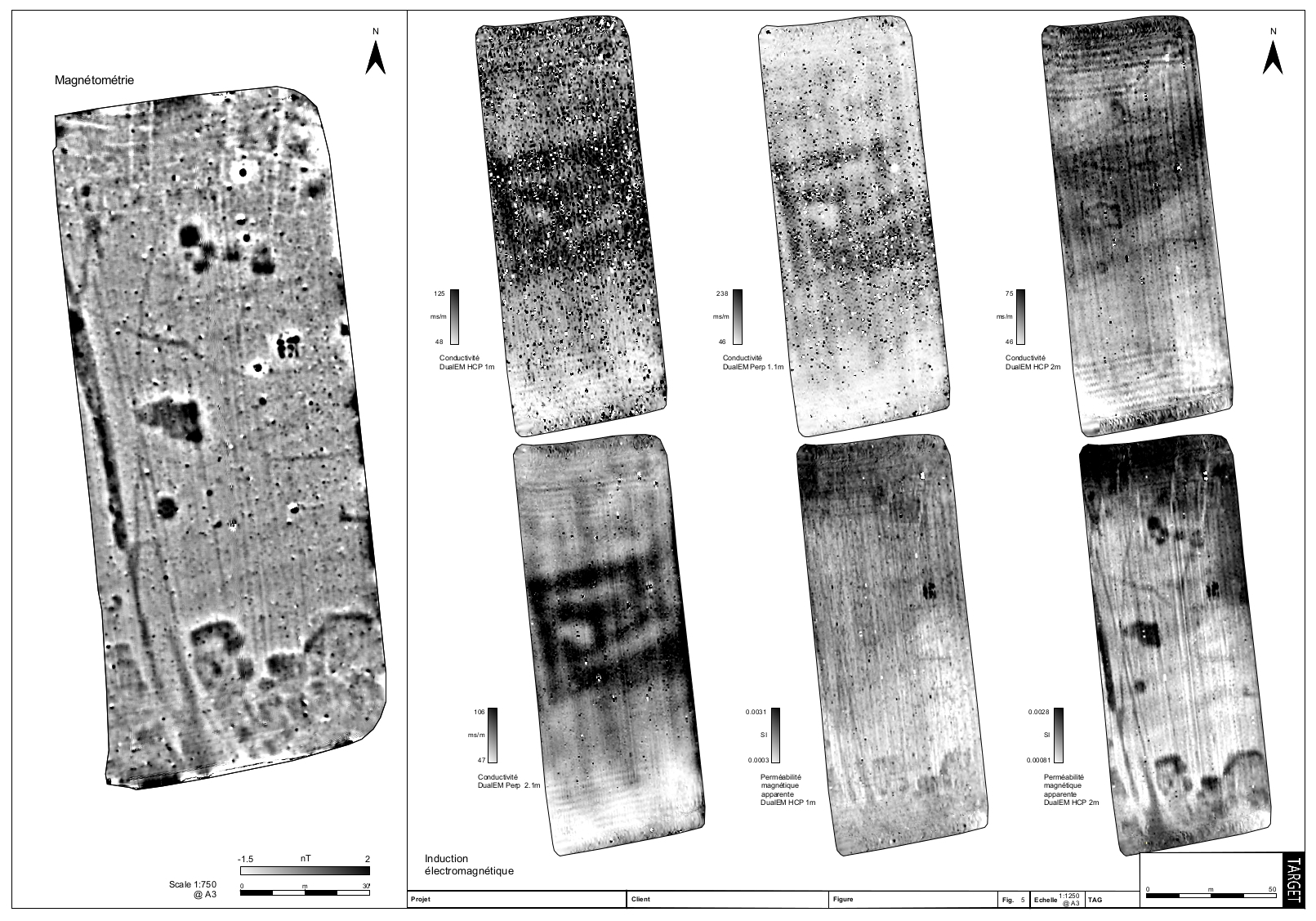Electromagnetic induction (EMI)
Recommended survey spatial resolution: 10Hz x 0.5m
Target provides a complete and experienced in-house EMI service for archaeological investigation, including all aspects of data acquisition and fieldwork, data processing and interpretation.
EMI is frequently used on archaeological sites where soil environs may prove problematic to magnetic methods of prospection, and when the potential for buried structures, such as cairns or building foundations, may warrant combination of two or more geophysical techniques.
EMI conductivity meters simultaneously measure apparent resistivity (quadrature) and apparent magnetic susceptibility (in-phase), and comprise of a transmitting coil, and 3-4 receiving coils, for acquisition of 6-8 data sets from 3-4 depths below surface. The transmitting coil generates a time varying primary magnetic field, which propagates above and below ground, generating alternating currents (eddy currents) within the soil and the objects it contains. These eddy currents create a secondary magnetic field which is proportional to the rate of change of the primary magnetic field, and measured by receiving coils mounted at set distances from the transmitting coil.
TARGET uses EMI in preference to slower, more conventional electrical resistivity instrumentation, and primarily as an accompaniment to magnetometry, with successful mapping of buried remains including
- Castle foundations
- Moated sites
- Prehistoric enclosures & tumuli
- Roman settlement remains
- WW1 ammunition dumps




